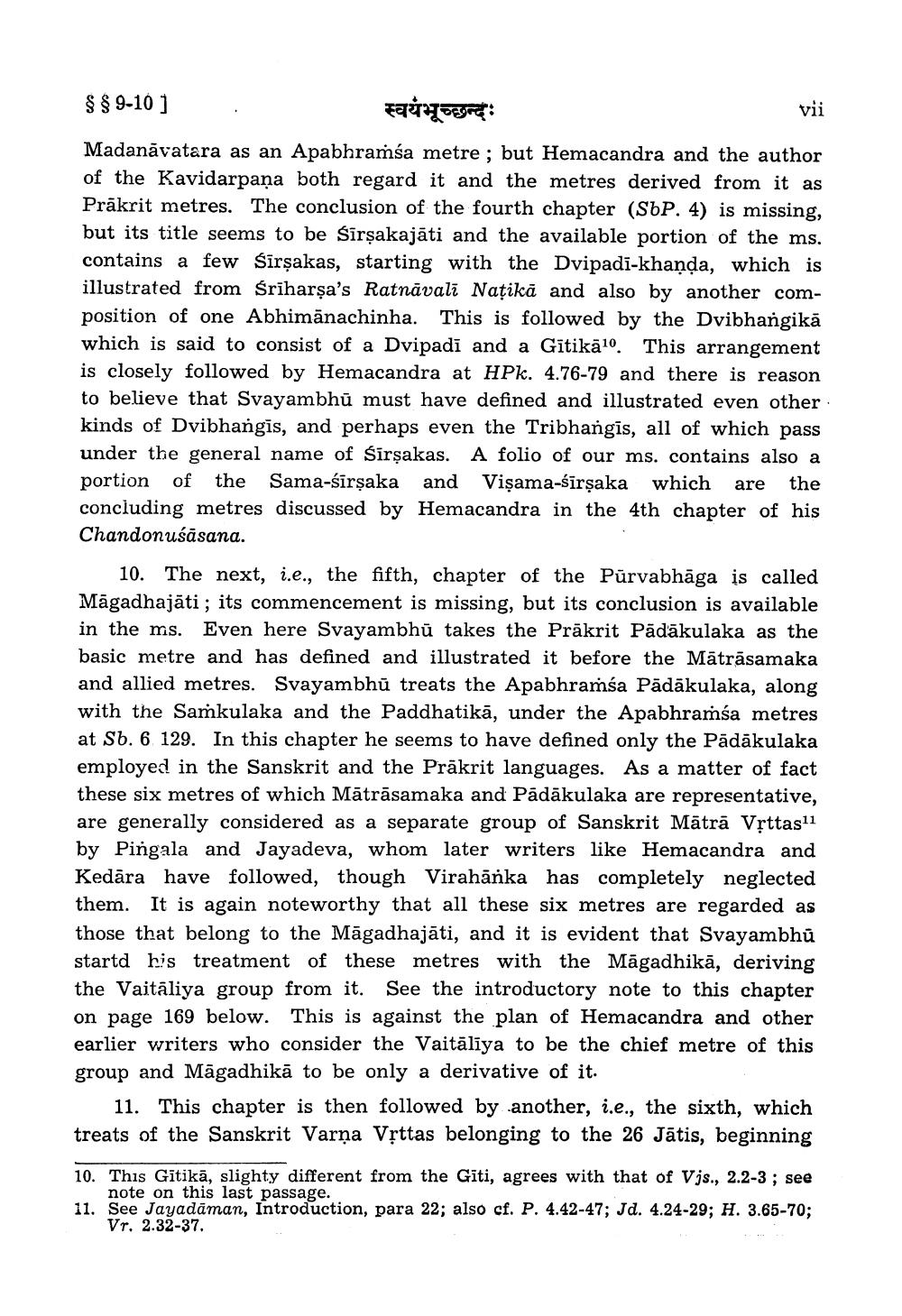________________
vii
$ $ 9-10 ]
स्वयंभूच्छन्दः Madanăvatara as an Apabhramba metre; but Hemacandra and the author of the Kavidarpaņa both regard it and the metres derived from it as Prākrit metres. The conclusion of the fourth chapter (SbP. 4) is missing, but its title seems to be Sirsakajāti and the available portion of the ms. contains a few Sīrşakas, starting with the Dvipadī-khanda, which is illustrated from Śrīharşa's Ratnāvali Naţikā and also by another composition of one Abhimānachinha. This is followed by the Dvibhangikā which is said to consist of a Dvipadi and a Gītikā10. This arrangement is closely followed by Hemacandra at HPk. 4.76-79 and there is reason to believe that Svayambhū must have defined and illustrated even other kinds of Dvibhangis, and perhaps even the Tribhangis, all of which pass under the general name of Sirsakas. A folio of our ms. contains also a portion of the Sama-śīrşaka and Vişama-śīrşaka which are the concluding metres discussed by Hemacandra in the 4th chapter of his Chandonuśāsana.
10. The next, i.e., the fifth, chapter of the Pūrvabhāga is called Māgadhajāti; its commencement is missing, but its conclusion is available in the ms. Even here Svayambhū takes the Prākrit Pādākulaka as the basic metre and has defined and illustrated it before the Mātrāsamaka and allied metres. Svayambhū treats the Apabhramśa Pādākulaka, along with the Samkulaka and the Paddhatikā, under the Apabhramba metres at Sb. 6. 129. In this chapter he seems to have defined only the Pādākulaka employed in the Sanskrit and the Prākrit languages. As a matter of fact these six metres of which Mātrāsamaka and Pādākulaka are representative, are generally considered as a separate group of Sanskrit Mätrā Vrttas11 by Pingala and Jayadeva, whom later writers like Hemacandra and Kedāra have followed, though Virahānka has completely neglected them. It is again noteworthy that all these six metres are regarded as those that belong to the Māgadhajāti, and it is evident that Svayambhū startd his treatment of these metres with the Māgadhikā, deriving the Vaitāliya group from it. See the introductory note to this chapter on page 169 below. This is against the plan of Hemacandra and other earlier writers who consider the Vaitālīya to be the chief metre of this group and Māgadhikā to be only a derivative of it.
11. This chapter is then followed by another, i.e., the sixth, which treats of the Sanskrit Varņa Vșttas belonging to the 26 Jātis, beginning
10. This Gītikā, slighty different from the Gīti, agrees with that of Vjs., 2.2-3 ; see
note on this last passage. 11. See Jayadāman, Introduction, para 22; also cf. P. 4.42-47; Jd. 4.24-29; H. 3.65-70;
Vr. 2.32-37.




